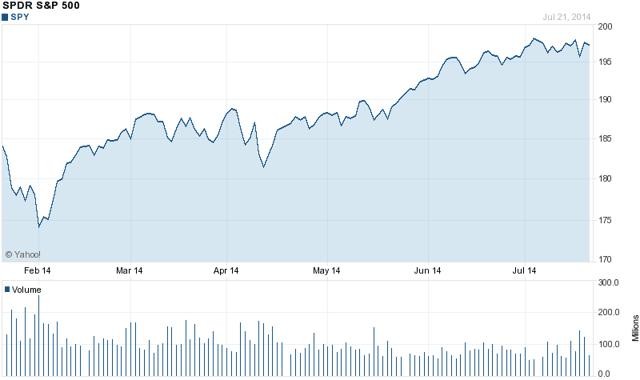Good News for Stock Pickers Stock Blog Hub
Post on: 13 Апрель, 2015 No Comment

November 13th, 2013
August 23, 2013
The decline in correlations has become a trending topic among stock market strategists. The monthly returns of individual U.S. stocks are diverging from the Russell 1,000 index. Depending on who you ask, this is either a positive occurrence for stock pickers or a sign that fund managers are becoming complacent.
Correlations measure how closely the returns of two investments mimic each other. The closer a correlation value is to 0.0, the greater the difference in returns is. The closer a correlation value is to 1.0, the more similar returns are. Correlations can be as low as -1.0 when return characteristics are opposite of one another.
During bear markets, correlations among individual stocks rise towards 1.0. (Correlations across asset classes and geographic markets often rise too). As the level of fear and discomfort rises, investors opt to sell everything rather than selectively look for opportunities. During bull markets, correlations among individual stocks fall as investors become more opportunistic and selective.
Right now, were seeing correlations fall. On Sunday evening, The Wall Street Journal reported, Stocks in the Russell 1000 index of large-capitalization stocks had a weighted average correlation of 0.30 to the index itself, the lowest for an end-of-month since 2007 and down from 0.57 a year earlier, according to Deutsche Bank data. This decline is not surprising given the length of the current rally. Institutional investors are emboldened by the rise in stock prices and are more inclined to take security-specific risk.
Whether this is a good thing is a topic of debate. On the positive side, the falling correlations indicate there are opportunities for investors to beat the market. We can see this with the performance of the AAII Model Shadow Stock portfolio. which is up 44.4% year-to-date through July 31, 2013. On the negative side, it suggests institutional investors are less fearful. Citigroups Tobias Levkovich says the reduced correlations among stocks is a sign of complacency. Business Insider quoted him as opining, Investors might be overly focused on stock picking and have begun to ignore broader influences such as Fed policy, market valuation, European growth trends, economic surprise indices and the like.
I think the lower correlations are good news for stock pickers. The decline makes it easier for those who can find quality stocks to beat the market. (It does not guarantee you will, however.) I also think what we are witnessing is simply an occurrence of normal market cycles. It is natural to expect correlations to fall as a bull market lengthens in time, just as it is natural to expect correlations to rise when the bear wakes up from hibernation.
The problem with focusing on changes in monthly correlation is that you will find yourself jumping back and forth between active and passive (index) strategies, which needlessly increases transaction costs and will drive you nuts. I think the better strategy is to view changes in monthly correlations as interesting, while sticking with a mix of individual stock selection and indexing that makes the most sense for you.
Charles Rotblut, CFA is a Vice President with the American Association of Individual
Investors and editor of the AAII Journal.
About vitalstocks
This is a sample profile field. Vitalstocks is the operating company for Stockbloghub. This will place the picture of the author or company in the profile. Here is another extra line of information.














